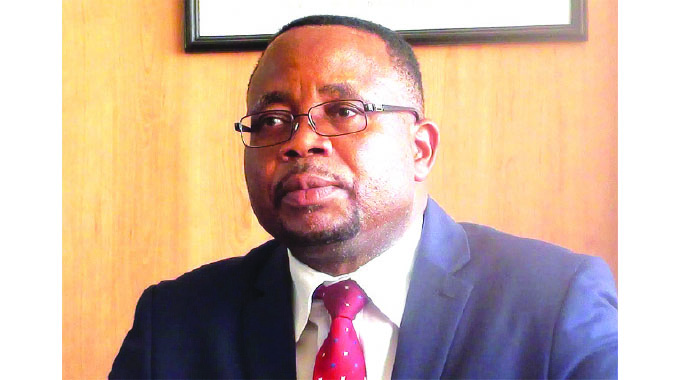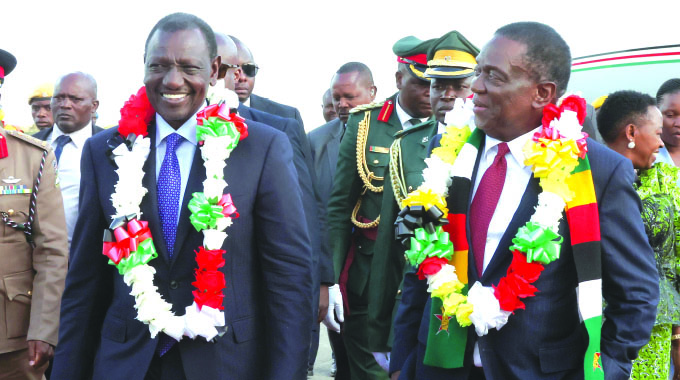Second Republic launches historic social protection system

Wallace Ruzvidzo Herald Reporter
THE Government, in conjunction with the World Bank, UNICEF and the World Food Programme (WFP) among other stakeholders yesterday launched the historic Zimbabwe Integrated Social Protection Management Information System (ISPMIS) which is set to revolutionise the country’s social protection initiatives.
The system will enable a harmonised implementation and monitoring of social protection programmes, while ensuring transparency and good governance of social protection programming as the Second Republic continues to walk its talk in leaving no stone unturned in improving service delivery to Zimbabweans as well as towards the achievement of Vision 2030.
Interlinkages will also be created including with the Civil Registry Department to ease registration of beneficiaries and avoiding duplications. Prior to its launch, the system was piloted in nine Cyclone Idai affected districts namely Chikomba, Mutare, Chipinge, Buhera, Chimanimani, Masvingo, Zaka, Gutu and Chiredzi using the Food Deficit Mitigation Strategy Programme, and it was a resounding success.
A development site at Compensation House has since been fully equipped and installed with the necessary security systems and infrastructure procured by the World Bank.
Speaking at the launch, Public Service, Labour and Social Welfare Minister Paul Mavima said Government was committed to modernising its services with the end result of service delivery to the general citizenry.
He said the ISPMIS would go a long way in the attainment of the country’s vision to become an upper-middle-income society by 2030.
“As you may be aware the Government of Zimbabwe has set Information Communication Technologies as enablers of economic growth.
“This has seen Government investing a lot in Information Communication Technologies as part of the broader programme of moderniSing work processes in Government.
“The thrust is to utiliSe information and communication technologies and digital technologies in the provision of Government services with a view to enhancing service delivery for the benefit of the ordinary Zimbabwean so that we work towards achieving vision 2030 which is Towards a prosperous and Empowered Upper Middle-Income Society by 2030,” he said.
While outlining some of the system’s features, Minister Mavima said the system was flexible enough to add new programs and their parameters.
In addition, development partners would also be able to access information relevant to their programmes.
“The Ministry of Public Service, Labour and Social Welfare is mandated to provide relief to socio -economic, climate and natural disasters induced hardships on the people of Zimbabwe.
“The Zimbabwe National Social Protection Policy Framework (NSPPF) of 2016, recommended for the creation of an Integrated Social Protection Management Information System for better management of social protection programs in Zimbabwe.
“This is further emphasised in the National Development Strategy 1 as it is given as one of the major outputs expected from the Social Protection Thematic Area,” he said.
Also speaking at the launch, the World Bank’s country manager for Zimbabwe Ms Marjorie Mpundu said, the World Bank would continue supporting the Second Republic’s efforts in improving social welfare.
“The World Bank is a longstanding partner to the Government of Zimbabwe and we are a committed to supporting Government’s efforts to strengthening the social protection systems in the country for effective, accountable and transparent delivery of safety nets to the poorest and most vulnerable Zimbabweans,” she said.
UNICEF’s country representative Dr Tajudeen Oyewale said they were committed to continue partnering with Zimbabwe in social protection programmes.
“This partnership aligns with both the United Nations Sustainable Development Cooperation Framework (2022-2026) and the UNICEF Zimbabwe Country Programme (2022-2026).
“The ISPMIS, as envisioned, will play a pivotal role in achieving this objective by effectively identifying beneficiaries, capturing their information, reporting on the assistance provided, and ensuring predictable and regular assistance,” he said.
WFP’s country director for Zimbabwe Ms Francesca Erdelmann said they would continue to contribute in strengthening the country’s national systems and capacities.








Comments